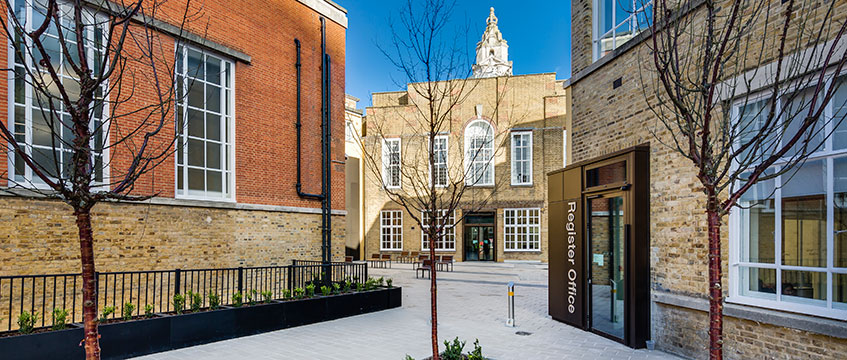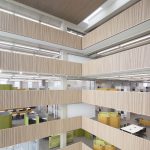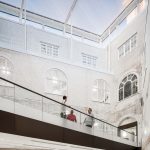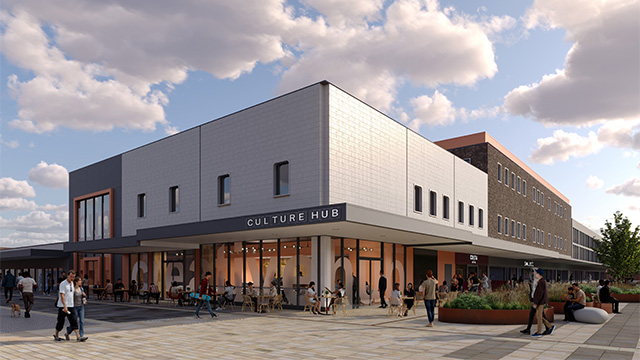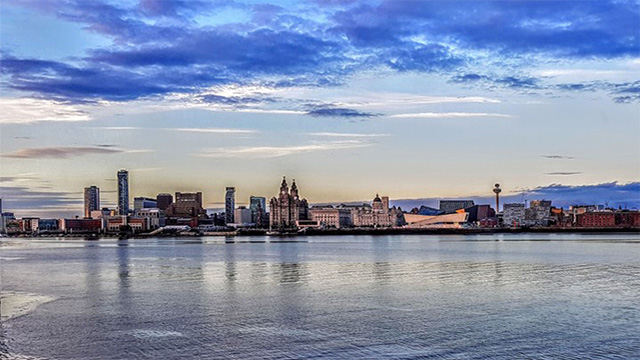At a time when public-private partnerships are under intense scrutiny, pressure to deliver greater proportions of affordable housing are derailing and delaying projects and London’s night-time economy is under threat, there are some places where progress is being made.
Lambeth in south London is one. Seven years ago the borough began a £160m project to reduce its core office buildings from 14 to two, saving at least £4.5m a year.
The restoration of the existing 91,500 sq ft Grade II listed town hall building would deliver affordable office space for start-ups.
A new-build civic office with energy centre would create 120,000 sq ft of energy-efficient workspace for the council, while the refurbishment of an old print facility into The Press building would provide storage for 300 bicycles, toilets, showers and changing facilities, plus commercial space and an electrical substation.
Meanwhile, 194 new homes, 40% of them affordable, would provide homes for families in the borough, many of them on the council’s waiting list.
And as if that were not challenging enough, in the heart of the project sits The Fridge. The live music venue – whose stage has hosted everyone from The Clash and New Order to Soul II Soul and Rudimental – was right in the middle of the construction site and would remain open for the full duration of the project.
Looking at the scheme today, the first phase is open, and it’s apparent that it has conspicuously delivered – for council staff working in the offices, for businesses drawn to what remains one of London’s most vibrant boroughs, for residents and even for clubbers.
“It’s about seeing it in the context of the wider regeneration of Brixton,” says Sue Foster, strategic director for neighbourhood and growth at the council.
“This has been an important part of that. Not only is it creating new homes – particularly affordable homes, there are more than 200 homes being delivered through this – but it’s about creating workspace and ensuring our creative digital industries, which are thriving in Brixton, can continue to grow and develop.”
Successful partnerships
If there are lessons for others to learn from the project they are perhaps most apparent in the partnership approach adopted. Of course, it is by no means unique to Brixton, but attempts elsewhere have been less successful.
The combined provision of affordable housing and workspace means familiar tensions around one being at the expense of the other are lessened.
A higher-than-usual percentage of affordable housing (40% in total, 47% on-site) has helped placate social housing campaigners. A focus on minimising disruption through detailed project management has gone a long way in keeping local residents on board.
And the retention of the iconic nightclub that was The Fridge and is now The Electric Brixton, even during construction, means those who maintain the nightime economy is vital in developing vibrant places had little with which to find fault.
Communication
Yes, you don’t have to delve too deeply to “discuss (or argue about) Brixton’s ongoing gentrification in the raging, lively bear pit that is the Brixton forum” on BrixtonBuzz, but other projects have attracted more vitriol – enough, in some cases, to stop them in their tracks.
Foster says there were very few objections and those that came in were around scale. “One of the important things we have collectively done as a partnership is talk to and communicate with the community. We’ve had some dedicated people working with the community to make sure we addressed their concerns with a big development coming forward very close to the residents. It’s been a very important thing to continue to have that dialogue right through the whole process.”
Very shortly, families will not be going into the civic centre to join a waiting list, they will be moving into a house where the civic centre used to be
And to do that, it’s also been important to retain the support of staff, as well as those attending planning committees and other meetings.
“What’s emerged is a fantastic outcome for us and the council and our staff teams,” says recently appointed Lambeth chief executive Andrew Travers.
He doesn’t underestimate the significance.
“The fact that it’s being produced by a partnership between the council and various other private sector organisations is also going to be important because it’s quite difficult politically now to mobilise those sorts of partnerships. It’s absolutely crucial we find a way to keep doing that.
“As a council we can do quite a lot – we have a balance sheet, we have assets – we can’t really take on projects of this magnitude without partnering with the private sector.”
With public exhibitions and other tactics deployed to keep the community involved, as well as putting affordable housing and workspace where the council offices used to be, Matthew Bennett, cabinet member for planning, investment and new homes, says the priority has been “to make a visible statement that this is a council that wasn’t trying to take value out of Brixton. It’s trying to put value back in.
“The proof is now in the pudding. Very shortly, families will not be going into the civic centre to join a waiting list, they will be moving into a house where the civic centre used to be.”
Building trust
Teamwork – and flexibility – among those delivering the project has also been key. Muse is Lambeth’s development partner, Morgan Sindall the main contractor and Cartwight Pickard the architect. It is the fourth project on which the three businesses have worked together.
As a result, trust is high, says James Pickard: “The team has to be flexible and work together to overcome issues you come up against.”
That goes for external agencies too. Mike Auger, regional director for the south at Muse, describes conversations with Historic England as “clear and pragmatic” as the project evolved.
Removing emotion was key, as again was compromise. In engaging with the public, whose concerns were around “scale and massing”, telling and listening was of paramount importance. “It’s about being very open early on about what your ideas are,” adds Auger.
For Richard Dobson, area director for London at Morgan Sindall, employing a full-time community engagement manager was vital to the project. An important part of their role was negotiating with TFL to control access to the site and limit the impact on residents.
“It meant we had residents as comfortable as they could be with a large construction project going on next to them,” he says.
And there’s little he would change if he had his time on the project again. “I think we got most things right,” he says. “Digital communications have moved on. If we were doing it again I think we would probably even further the amount of digital communication we did.”
Community focus
Affordable workspace is at the heart of the offer, too. And just a few months after opening, the offices are already fully let to creative, digital and marketing agencies, most of which are “locally grown”, says Meanwhile Space co-founder Eddie Bridgeman, who is running the project.
“There’s also a sprinkling of social enterprises and charities in there and a couple of tenants who are Brixton-based businesses who had to move out of the borough and have returned because space had become available,” he says.
“Tenants are vetted and have to demonstrate why they would benefit from the space and the contribution they would make to the local area.”
Lambeth is also proving attractive to larger businesses. One that has moved into the borough is Squire & Partners. The architecture practice purchased a dilapidated Edwardian department store in Brixton, entirely reimagining the space and moving in last year.
Director Sophie Steed says the decision to move from King’s Cross was influenced by rents in north London but also by the lure of the borough itself.
“Brixton seemed the place to be,” she says. “Lots of our peers were based in north London. They didn’t know the area at all. We brought people down here and showed them the area and what’s on offer in this location. And now everybody seems fairly happy.”
The project continues. The next, imminent phase of the construction programme includes the redevelopment of Hambrook House and the refurbishment of Ivor House.
But it won’t stop there. “This won’t be a static set of buildings in a place,” says Foster. “It will be an evolving space that will change and develop over time. We are looking to go and consult on a wider masterplan for Brixton that will then create another way of engaging with the wider community.
“We are also in the process of reviewing our Local Plan. If we’re talking to investors and developers, they want confidence that as a borough we are really keen to support growth and change and development. Being able to point to something we have done in partnership that we have made a success of and that has acted as a catalyst for change in Brixton is really important.”
Muse, says Auger, won’t be resting on its laurels. “You’re only as good as your last gig,” he says. “The depth of our track record is great. It’s fantastic for us to deliver a project like this, particularly one that is so multi-faceted – historic buildings, residential, new offices and the retail and civic community elements all on one site.”
If this is to become a model to follow, Morgan Sindall’s Dobson, has a go at defining what a successful regeneration project looks like.
“Good-quality buildings should be a given now,” he acknowledges. “What differentiates us in this sector is the ability to understand all those stakeholders.” And quality is about much more than just about a finished product.
“Quality means great community liaison, great stakeholder liaison and it means politicians in local borough are happy.”
In partnership with

To send feedback, e-mail damian.wild@egi.co.uk or tweet @DamianWild or @estatesgazette







